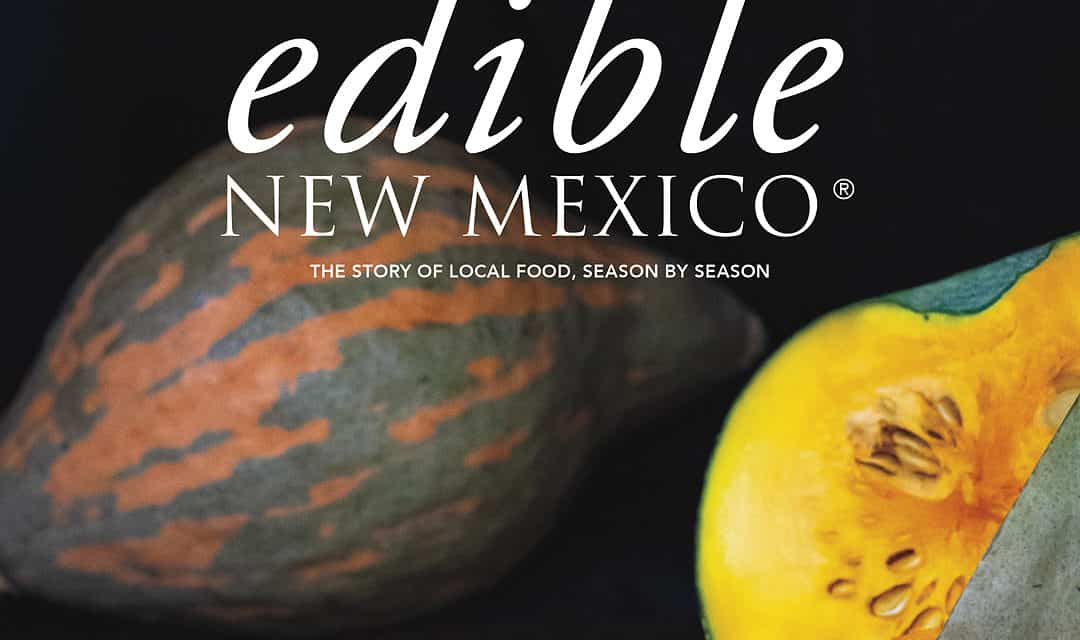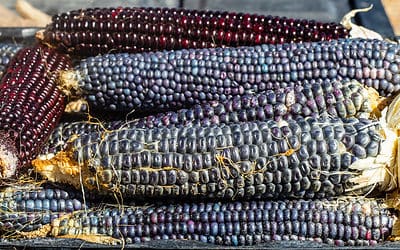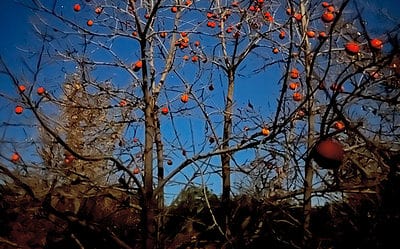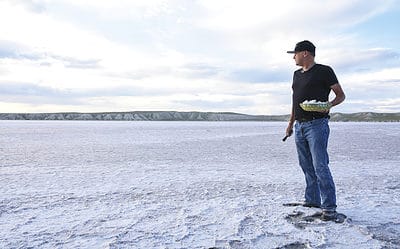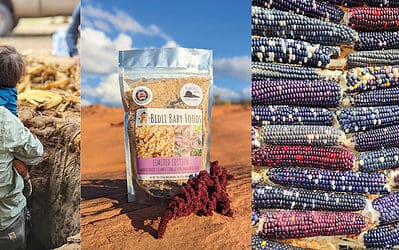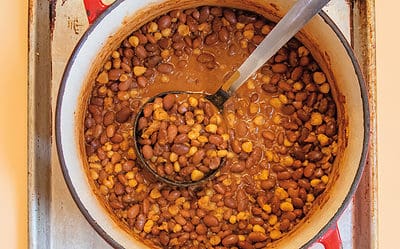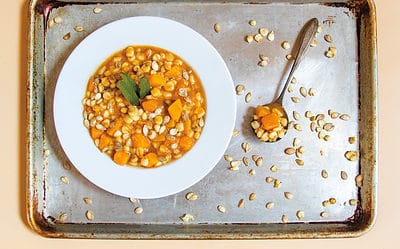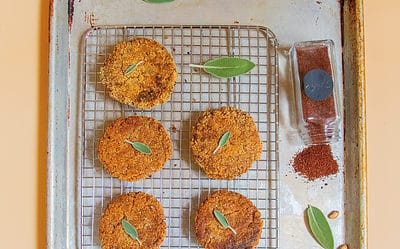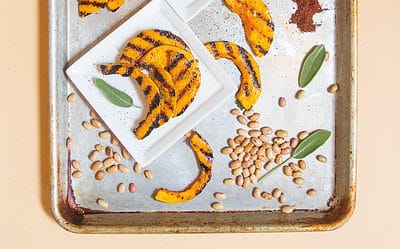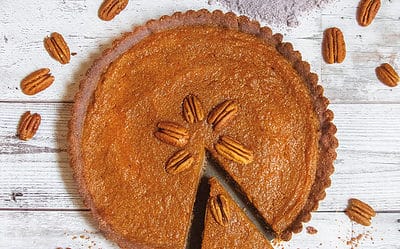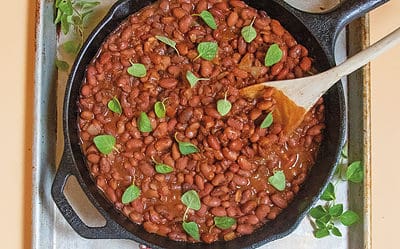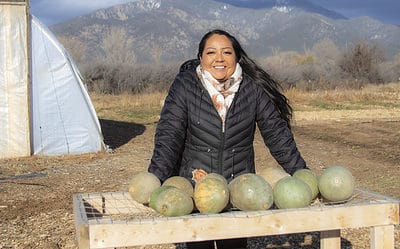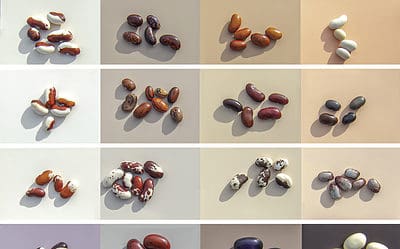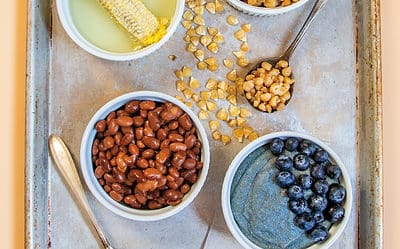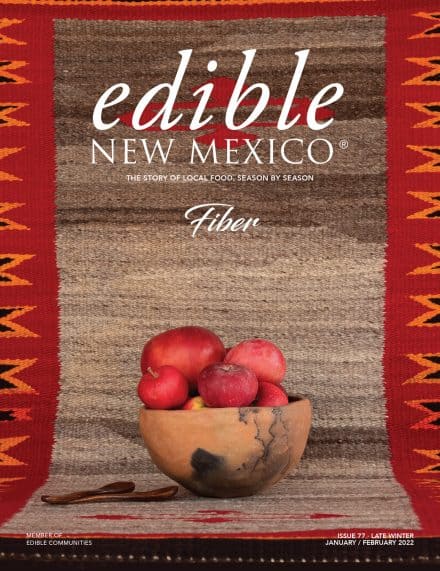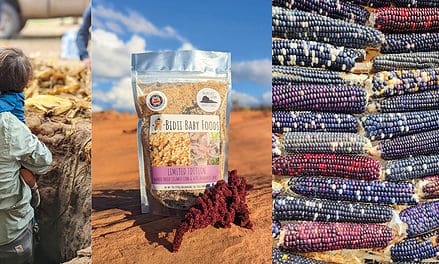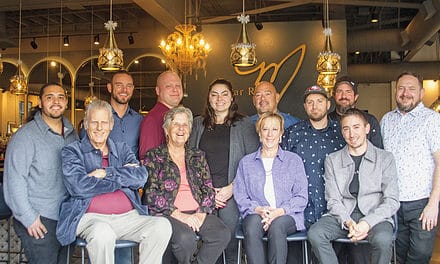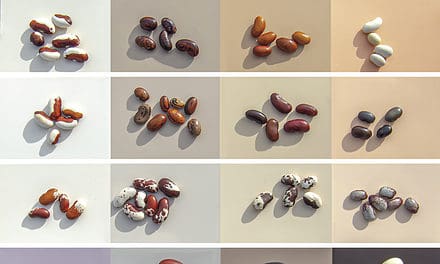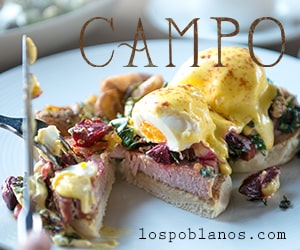The year is 2023. The scene is territory known by many names, some of them closely guarded secrets. These lands have changed hands many times, and even today, disputes in ownership persist—not only in fact but in possibility. Like the Bedouin lands of North Africa, these deserts and dunes have stood in for distant planets, alien terrain. Less evident to outsiders is the remarkable biodiversity of these lands, and the tenacity of their inhabitants. Among them are many who believe the earth has a future.
The stories in this issue of edible New Mexico are no more science fiction than the view from your window, but, like the artwork of Indigenous Futurism, these are stories where time bends. They are stories where la milpa, as the practice of intercropping squash, beans, and corn is known in Mexico and Central America, is more than a historical practice. These stories of the Three Sisters—a term said to come from the Haudenosaunee people—are stories in the present tense, stories where the past refracts the future.
In these pages, Ungelbah Dávila-Shivers shares a love letter to beans that is also a song of praise for her centenarian grandfather, whose bean adventures have sustained him throughout his life. Cassidy Tawse-Garcia threads narratives of corn and place through the intimate ritual of a very contemporary cup of atole. And in exploring local stories of squash, leticia gonzales reflects on the ways human relationships—with food, and one another—transcend our lifetimes. This is true, as we learn from Moises Gonzales, of wild food gathering traditions too.
The practice of storytelling may seem anchored in the past, but, like planting trees and saving seeds, it is rooted in a commitment to the future. Perhaps nothing better illustrates this than our dispatch from Alexandria Bipatnath. Writing from the Navajo Nation, she introduces a Diné-owned company producing organic food for the little ones poised to inherit the world.
The year is 2023. The scene is territory known by many names, some of them closely guarded secrets. These lands have changed hands many times, and even today, disputes in ownership persist—not only in fact but in possibility. Like the Bedouin lands of North Africa, these deserts and dunes have stood in for distant planets, alien terrain. Less evident to outsiders is the remarkable biodiversity of these lands, and the tenacity of their inhabitants. Among them are many who believe the earth has a future.
The stories in this issue of edible New Mexico are no more science fiction than the view from your window, but, like the artwork of Indigenous Futurism, these are stories where time bends. They are stories where la milpa, as the practice of intercropping squash, beans, and corn is known in Mexico and Central America, is more than a historical practice. These stories of the Three Sisters—a term said to come from the Haudenosaunee people—are stories in the present tense, stories where the past refracts the future.
In these pages, Ungelbah Dávila-Shivers shares a love letter to beans that is also a song of praise for her centenarian grandfather, whose bean adventures have sustained him throughout his life. Cassidy Tawse-Garcia threads narratives of corn and place through the intimate ritual of a very contemporary cup of atole. And in exploring local stories of squash, leticia gonzales reflects on the ways human relationships—with food, and one another—transcend our lifetimes. This is true, as we learn from Moises Gonzales, of wild food gathering traditions too.
The practice of storytelling may seem anchored in the past, but, like planting trees and saving seeds, it is rooted in a commitment to the future. Perhaps nothing better illustrates this than our dispatch from Alexandria Bipatnath. Writing from the Navajo Nation, she introduces a Diné-owned company producing organic food for the little ones poised to inherit the world.
M’tucci’s
M’tucci’s, the 2022 Local Hero for Restaurant, Albuquerque, has four restaurants around the Duke City serving approachable Italian fare with a “welcome home” style of service.
Love in a Cup
Cassidy Tawse-Garcia visits with blue corn farmers across New Mexico, who share their techniques for farming this ancient food in an arid landscape and what the crop means to them.
Growing Your Future Favorite Tree
Marisa Thompson delves into the arborist mantra, “Right tree, right place,” explaining how to choose your future favorite tree that will thrive in your climate and on your property.
Food Gathering Traditions OF HIGH-MOUNTAIN GENÍZARO COMMUNITIES
Moises Gonzales traces the history of wild foods such as quelites, asparago, verdolagas, and the fruits of various cacti, which were essential to earlier Indigenous and Genízaro communities and remain staples of New Mexican cuisine today.
First Foods From Shiprock
Alexandria Bipatnath introduces Zachariah and Mary Ben, owners of the Shiprock-based Bidii Baby Foods, which specializes in creating greater access to traditional foods in the early childhood years.
Beans and Chicos
Many recipes use bacon or ham hocks to flavor their beans, but sticking with a basic bean recipe, we impart smokiness with chicos, some fat with the bison tallow, and spice with red chile powder.
Nixtamalized Hominy Stew
First developed in Mesoamerica over three thousand years ago, nixtamalization is a way of processing dried corn.
Crispy Bean Cakes
Eat these alone as snacks, on top of salad greens, with eggs, or topped with grilled squash.
Grilled Butternut Squash
Freddie Bitsoie exchanges the open fire for a stovetop grill in this simple-to-execute squash dish. This recipe would work with any kind of winter squash except spaghetti squash.
Butternut Squash and Blue Corn Tart
This Butternut Squash and Blue Corn Tart recipe is a sweet treat that celebrates two of the Three Sisters.
Anasazi Beans with Chile Agave Glaze
Sean Sherman uses tepary beans in this recipe, but they can sometimes be challenging to source, so I substituted another bean long cultivated in the Southwest—Anasazi beans.
Local Lexicon of Squash
In “Local Lexicon of Squash,” leticia gonzales visits with local growers and seed savers who share their expertise on the diversity of squash and the bounty of seeds being cultivated across the Southwest.
Holy Frijoles
Ungelbah Dávila-Shivers explores the historical and cultural significance of beans—pintos, limas, Anasazis, and more—to her family and the Indigenous peoples of the West.
Kristina Hayden Bustamante
Spotlight: Front of House An Interview with The Wine Director at The CompoundPhotos by Douglas MerriamKristina Hayden Bustamante, wine director at The Compound. Twelve years living and working in Los Angeles. More than a decade in New York City. And a vacation in New...
Cooking Fresh: Three Sisters Recipes
These basic formulas are essential to completing more complex recipes featuring the Three Sisters. All of them can stand on their own or be added as side dishes to a meal—and making a pot of beans on Sunday is a great jump on meal prep for the week.
Ray Naranjo
Ray Naranjo, the 2022 Local Hero for Chef, Albuquerque, believes in the preservation of the foodways and ancestral knowledge of his people and pushes the limits of what is known, unknown, and forgotten about the Indigenous food culture of North America.

